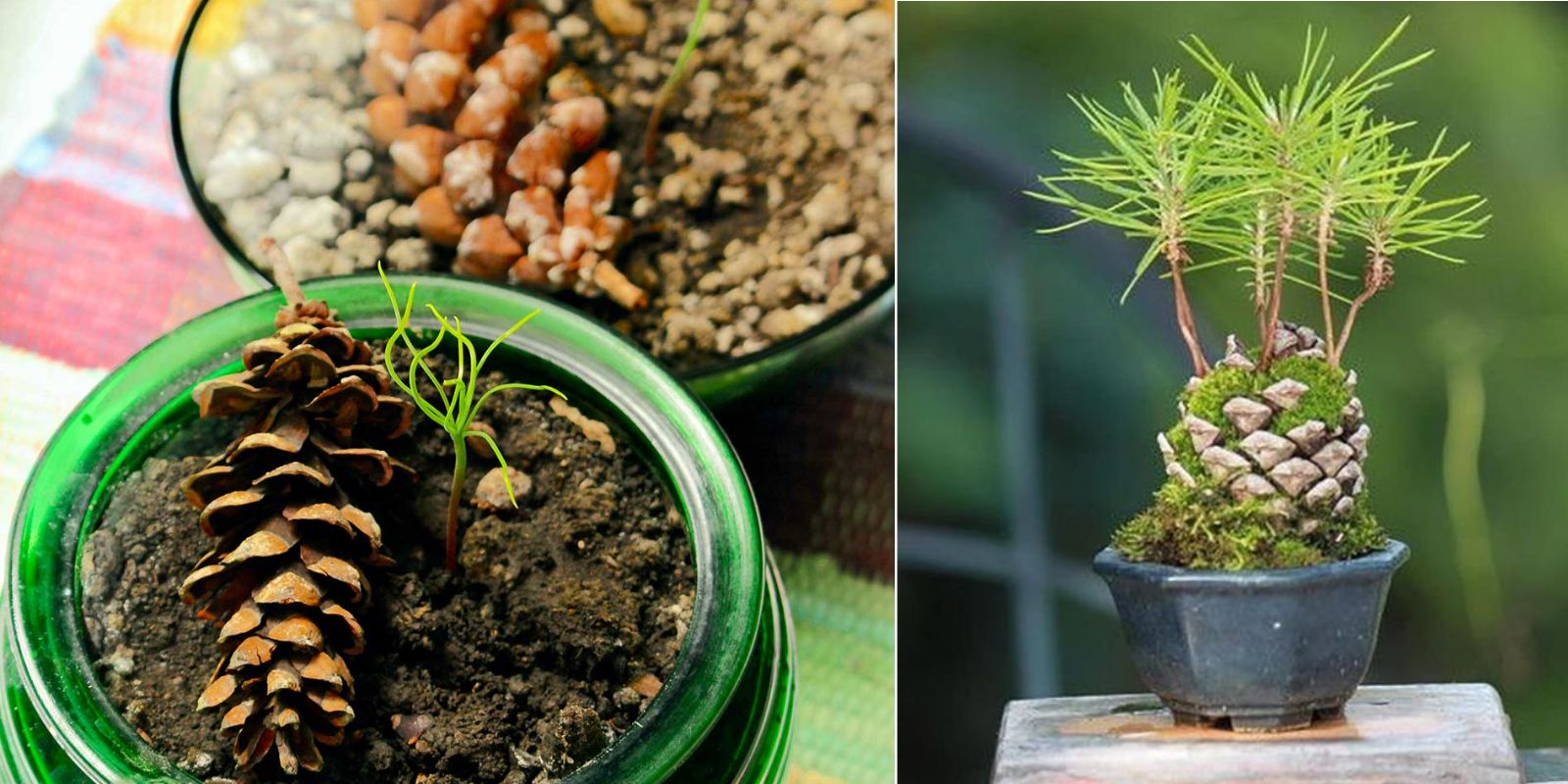Growing a tree from a pine cone is an exciting and rewarding gardening project. While pine cones themselves do not directly grow into trees, they contain seeds that, when properly extracted and germinated, can develop into a thriving pine tree. With the right steps and patience, you can successfully grow a tree from a pine cone and contribute to reforestation efforts or simply beautify your garden. In this guide, we’ll walk you through the process step by step, from collecting the right pine cone to transplanting a young sapling into your garden.
Understanding Pine Cones and Their Seeds
Pine cones serve as the reproductive structures of pine trees, containing seeds within their scales. Not all pine cones will produce viable seeds, so selecting the right cone is crucial. Pine seeds require specific conditions to germinate, including cold stratification to mimic natural winter conditions. With these key facts in mind, let’s get started on growing a tree from a pine cone.
Step 1: Collecting the Right Pine Cone
To begin, you need to find a healthy and mature pine cone. Look for cones that:
- Are fully matured and brown (green cones are still developing and won’t have mature seeds).
- Are slightly open, indicating that the seeds inside are mature.
- Have fallen naturally from the tree, rather than being plucked.
Once you’ve collected a pine cone, place it in a warm and dry location to allow it to open fully if it hasn’t already. This step helps to release the seeds trapped inside the cone.
Step 2: Extracting the Seeds
Once the pine cone has dried and fully opened, follow these steps to extract the seeds:
- Gently shake the pine cone or tap it lightly on a hard surface.
- Look for small winged seeds that drop from the cone.
- Remove the wings carefully by rubbing the seeds between your fingers.
- Discard any seeds that appear empty or damaged.
To test seed viability, drop a few seeds into a glass of water. Seeds that sink to the bottom are viable, while floating seeds may not germinate effectively.
Step 3: Stratification – Preparing the Seeds for Germination
Pine seeds require stratification, which is a period of cold treatment, to mimic winter conditions and trigger germination. Follow these steps:
- Dampen a paper towel and wrap the seeds inside.
- Place the wrapped seeds in a sealed plastic bag.
- Store the bag in the refrigerator for 6 to 8 weeks.
- Check periodically to ensure the towel remains moist but not soggy.
After stratification, your seeds are ready for planting.
Step 4: Planting the Pine Seeds
- Choose the Right Soil: Use well-draining soil, preferably a sandy or loamy mix, to mimic natural pine forest conditions.
- Prepare a Pot or Seed Tray: Fill small pots or seed trays with the soil mix.
- Plant the Seeds: Sow each seed about half an inch (1.3 cm) deep, covering it lightly with soil.
- Water Gently: Moisten the soil without overwatering.
- Provide Adequate Sunlight: Place the pots in a bright location with indirect sunlight.
Step 5: Caring for the Seedlings
- Watering: Keep the soil consistently moist but not waterlogged.
- Temperature and Light: Maintain a temperature of around 65–75°F (18–24°C) for optimal growth.
- Thinning and Transplanting: Once the seedlings develop their first true leaves, transfer them into larger pots to allow for root expansion.
- Fertilizing: Use a diluted liquid fertilizer once the seedlings are a few weeks old to encourage growth.
Step 6: Transplanting to an Outdoor Location
After several months, when the young tree is 8–12 inches tall, it’s ready for outdoor transplantation. Follow these steps:
- Choose a Suitable Site: Select an area with full sun and well-draining soil.
- Prepare the Planting Hole: Dig a hole twice the size of the root ball.
- Plant with Care: Place the seedling in the hole, cover it with soil, and press gently.
- Water Thoroughly: Provide sufficient water to help establish the young tree.
- Mulch for Protection: Apply a layer of mulch around the base to retain moisture and prevent weed growth.
Common Challenges and Solutions
- Poor Germination: Ensure seeds are viable and properly stratified.
- Damping Off Disease: Avoid overwatering and provide good air circulation.
- Slow Growth: Pine trees grow slowly in their early years; patience is key.
- Pests and Wildlife: Protect young trees from animals like deer and rabbits with fencing.
Conclusion
Growing a tree from a pine cone is a fulfilling process that connects you to nature while contributing to the environment. With patience and proper care, you can successfully cultivate a beautiful pine tree from seed and watch it flourish over the years. Whether you’re planting for reforestation, landscaping, or personal satisfaction, the journey of growing a tree from a pine cone is one of nature’s most rewarding experiences.
Have you tried growing a tree from a pine cone? Share your experiences and tips in the comments below! 🌲✨
#GrowYourOwnTree #PineTree #GardeningTips #SustainableLiving #TreePlanting #NatureLovers

